1. Consider the personality of your child when choosing the colour scheme
My 8-year-old is a lively little boy, some would say he's hyper. And as the evening wears on he gets more agitated as his anxiety grows. A bluey shade of grey and a deep green are two colours of choice for him. The bluey-grey brings a feeling of security and relieves stress, ideal for his bed time. Green improves concentration and reinforces a sense of safety grounding him for down time. The yellow pops lift the mood and stimulate learning, ideal to bring a sense of joy. And I have indeed witnessed a change of behaviour during our evening routine. Zak definitely seems a lot calmer and less nervous.
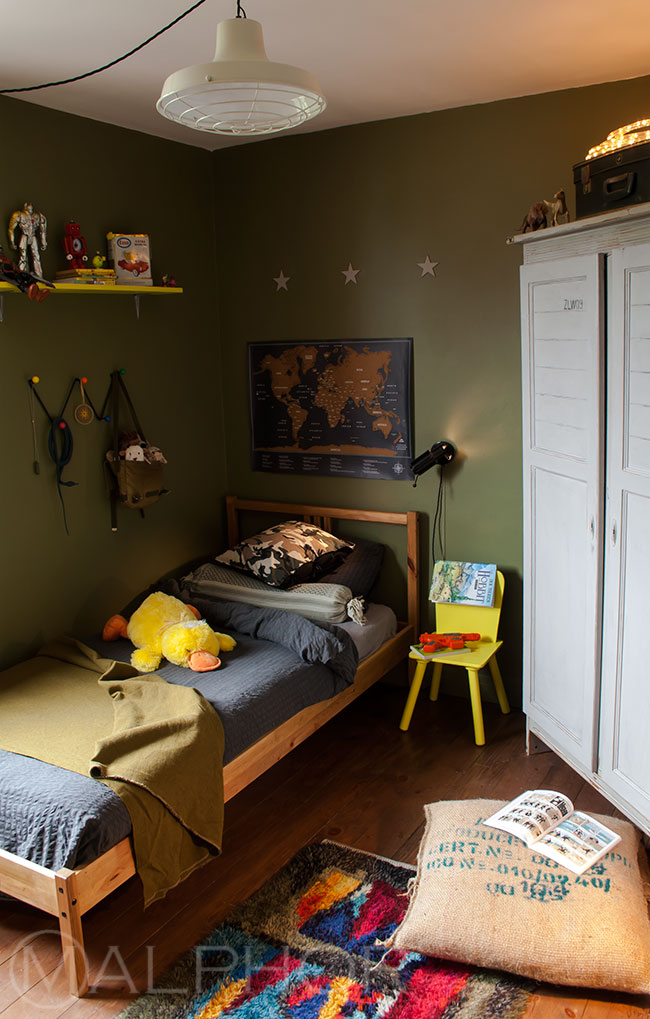
But, do dark colours in a small, north-facing room work? I hear you ask.
Yes. One might tend to think a small, dark room demands a light colour for the walls. But not necessarily. Dark hues promote a feeling of safety, calm and cosiness. And it will make bright colours pop against the walls, which makes posters, toys and furniture stand out. Also popping against the dark grey is the yellow door - notice how I painted the skirting boards and door frame the same colour as the walls for sobriety.
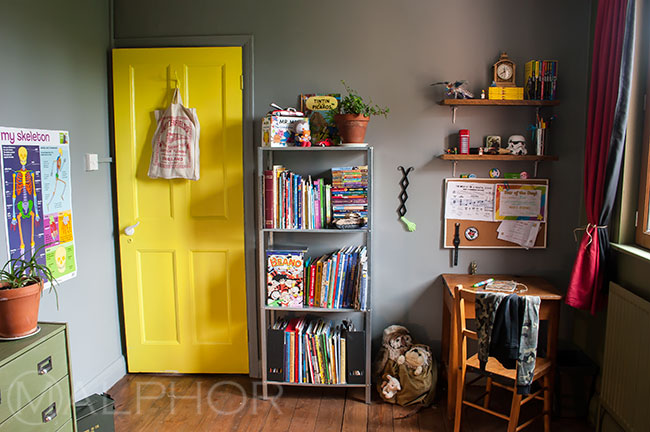
2. Involve the child
It is their room after all, and it is important to involve them in the decorating process. Ask them questions. What do they like? What is their favourite film/toy at the moment? What would their ideal room be? Children have plenty of ideas you can use to guide you. This is when you create your moodboard by collecting magazine scraps, paint and fabric swatches, photos from Pinterest and place them to see how they sit together. My one is a little soldier...
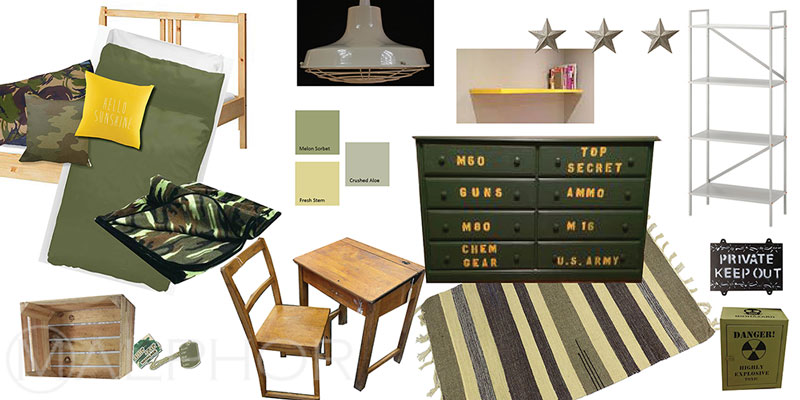
3. Lighting
Lighting is super important in any room. In a children's room, consider where your child will hold his different activities. This room is dark and does benefit from several light sources. Zak is an avid reader, so I fixed a reading lamp by his bed and set up a reading corner on the floor with a desk lamp he can angle to his wishes. A bright, ambient light on the ceiling works well for playing games. I laid fairy lights on top of his wardrobe for a soothing atmosphere. And I placed his desk near the window for maximum natural light. Using LCD bulbs might be a good idea to avoid over-heating when they fall asleep with the lights on or burns when handling.
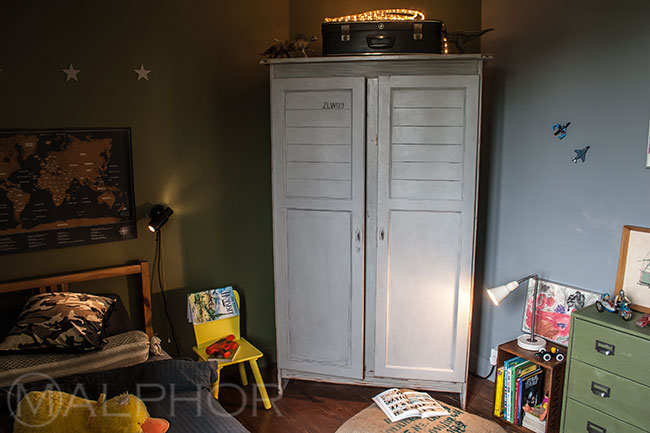
4. Make a plan to place furniture strategically
There is an awkward angle in Zak's room where a chimney breast used to be. I had no choice but work with it to make the most of this small space. After measuring each wall, door width and window dimensions, I drew a plan of the room. Using InDesign (but you could simply draw on a piece of paper), I made a document to a 1/10 scale where 200cm become 20cm, for example. Then, I measured all the furniture to go in and drew little boxes to scale that I could move around on the plan (you could cut out shapes of paper). This guarantees the furniture will fit where you imagine it will go but also helps you visualise the end results. I found out this way that my boy's wardrobe would fit perfectly against that angled wall and distract from it.
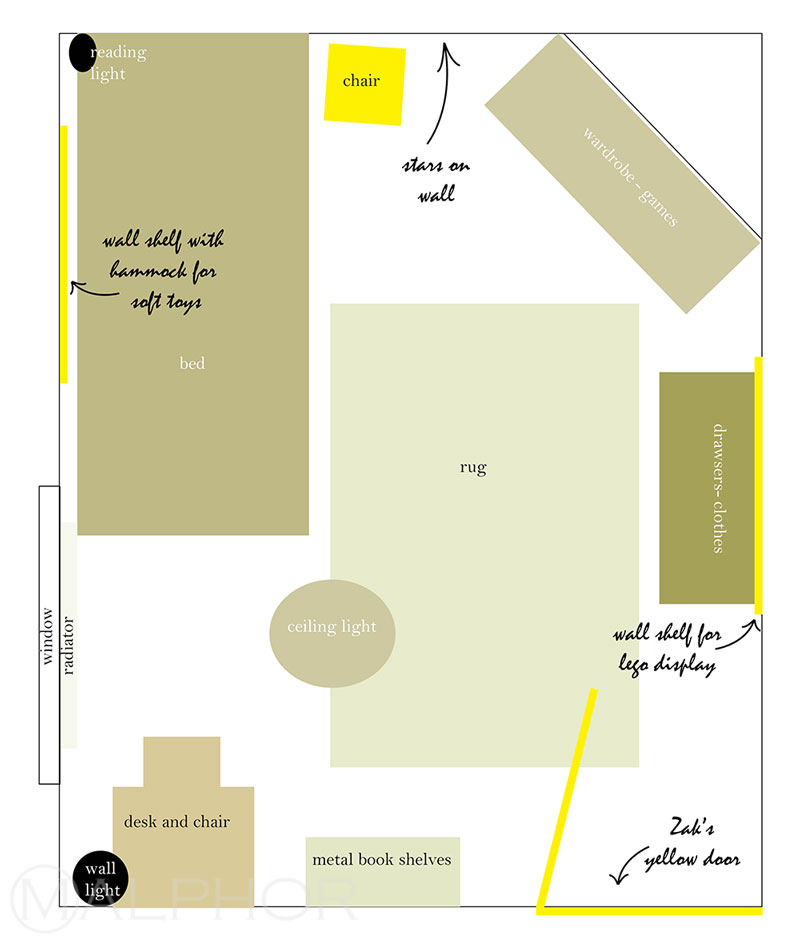
5. Think toys!
Toys (and books) are a major issue. They invade a space in no time and make a room cluttered and messy. Thinking about storage for them will help keep things tidy. First, go through the stuff your cherub has outgrown and pack a box or two off to the attic. A bookshelf and wall shelves are great for displaying their favourite toys and keep the floors clutter free. Use your kid's favourite books and toys as decoration as well. They are made of bright colours and can be used to reinforce the colour scheme like these bright yellow novels. A wall hanger can hold a bag of teddies. An under-bed storage box is a good investment and easily accessible. And I dedicated half of my boy's wardrobe to storage boxes full of lego, cars, board games, etc.
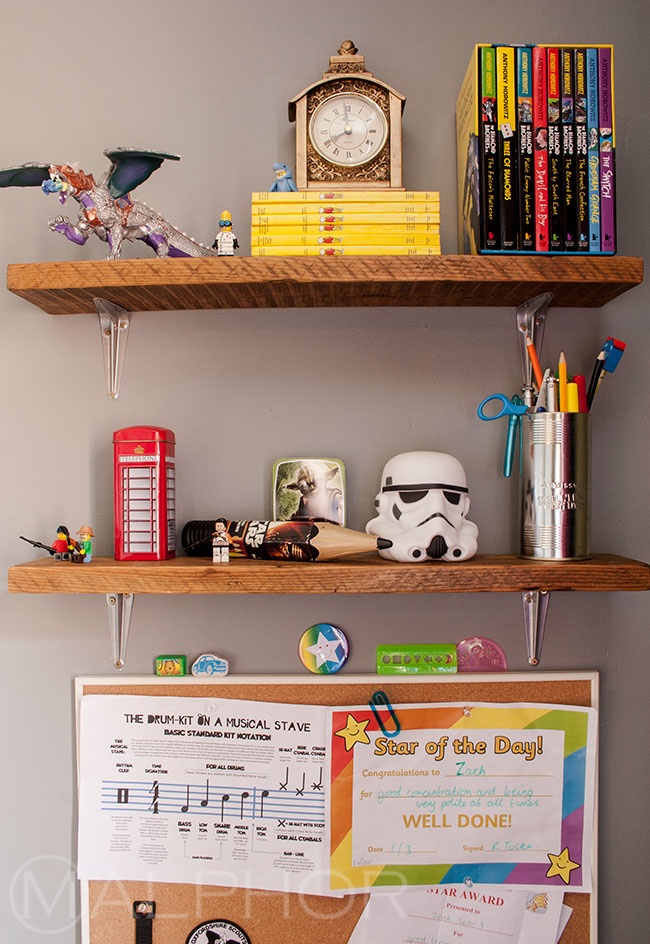
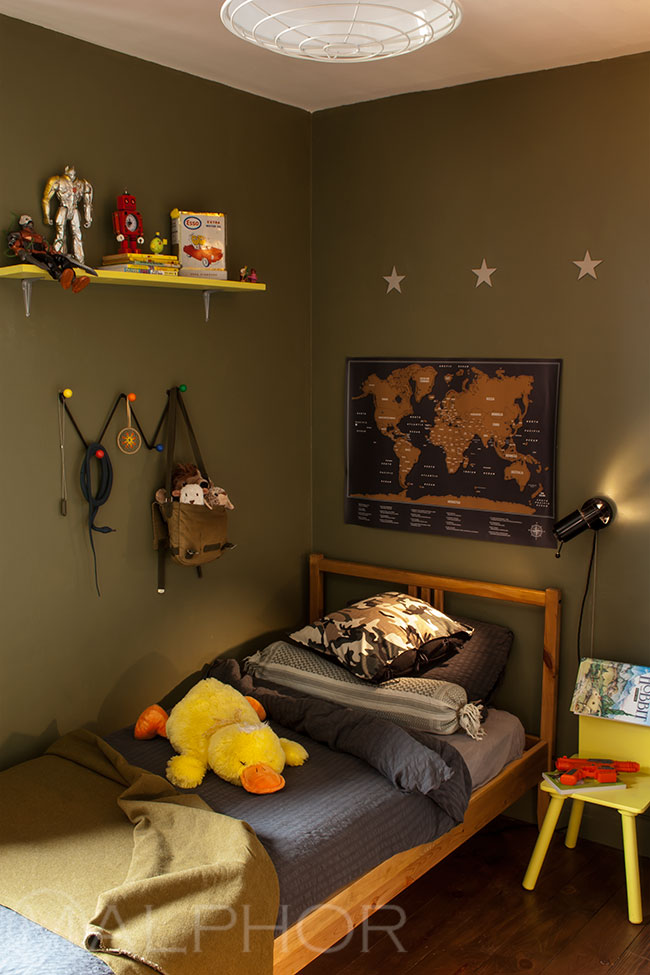
Come again soon as I will show you how I made the bolster on Zak's bed (no sewing involved!) and the salvage wall shelves...



